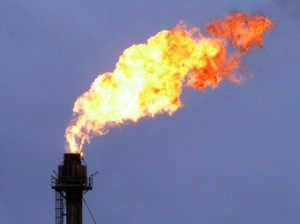 Natural gas advanced after EIA’s report showed US inventories fell by a record-high amount last week, beating analysts expectations. The energy source was also supported by long-term weather forecasting models, which predicted below-average temperatures in the high-use states, boosting demand for the power-station fuel.
Natural gas advanced after EIA’s report showed US inventories fell by a record-high amount last week, beating analysts expectations. The energy source was also supported by long-term weather forecasting models, which predicted below-average temperatures in the high-use states, boosting demand for the power-station fuel.
On the New York Mercantile Exchange, natural gas for delivery in January surged by 3.52% to trade at $4.401 per mBtu at 15:58 GMT. Prices swung between daily highs and lows of $4.407 and $4.280 per million British thermal units. The contract rose by 4.2% last week, after gaining 8.3% in the previous two 5-day-periods.
Gas advanced after the Energy Information Administration reported that US gas inventories fell by an all-time record-high 285 billion cubic feet in the week ended December 13, beating expectations for a 263 billion decline according to the median estimate of 26 analysts surveyed by Bloomberg. Previous record drop was 274 billion cubic feet in January 2008. Last weeks decline sharply exceeded the five-year average decrease of 133 billion cubic feet and last years 70 billion drop during the comparable week.
Total gas held in U.S. underground storage hubs equaled 3.248 trillion cubic feet as of Friday December 13th. Stockpiles were 488 billion cubic feet, or 13.1%, less compared to the same week a year ago and 285 billion cubic, or 7.4% less than the 5-year average of 3.509 trillion cubic feet.
Stockpiles in the East Region received a net withdrawal of 132 billion cubic feet to 1 683 billion and were 11.0% less than the average. In the West Region, stockpiles fell by 54 billion cubic feet to 450 billion and were 6.4% less than the average. Meanwhile, inventories at the Producing Region fell by 99 billion cubic feet to 1 115 billion and were 2.0% below the five-year average.
The energy source was supported by long-term forecasts for chilly weather across the high-consumption states of the Midwest and Northeast. NatGasWeather.com forecast a nice warm-up for the eastern US over the next few days as high pressure moves out of the West. This will lead to temperatures 10-25 degrees Fahrenheit above normal through the weekend for much of the East, easing temporarily natural gas and heating demand. The warm weather pattern will be disrupted by a cold blast of Canadian air, which started pushing into the Pacific Northwest and northern Rockies and will sweep into the West and Plains by Friday. Freezing temperatures will reach as far as the southern Plains. A low pressure system may develop over the Southwest and track into the central US where it will strengthen rapidly, leading to bands of heavy rains and strong storms over the south-central US, with some wintry precipitation further north into the cold air. Heavy precipitation and colder conditions will finally push into the Northeast late Sunday and into Monday.
NatGasWeather.com’s extended forecast for the week ending January 3rd called for chilly and wintry weather over the Midwest and Northeast and mild and drier conditions over the western US. The high-use states of the Midwest and Northeast will continue to draw above normal natural gas and energy under these conditions. There is still some likelihood for very cold temperatures to make it further into the central and southeastern US late in December, but the data is still not convincing enough.
According to AccuWeather.com, the low in Chicago on December 23rd will be 6 degrees Fahrenheit, 15 degrees beneath normal. Readings in Detroit on December 23rd will bottom at 12 degrees Fahrenheit, below the average of 23 degrees, while the low in Indianapolis will be 14 degrees Fahrenheit, or 9 degrees beneath average.
When cold weather is expected, natural gas surges as increased electricity demand to power air-conditioning calls for more supply of the fuel, which is used for a quarter of U.S. electricity generation. Above-average readings in the winter season have the opposite effect. Consumption usually picks up from November through March. According to the Energy Information Administration, power generation accounts for 32% of U.S. gas demand and 49% of U.S. households use the energy source for heating.





